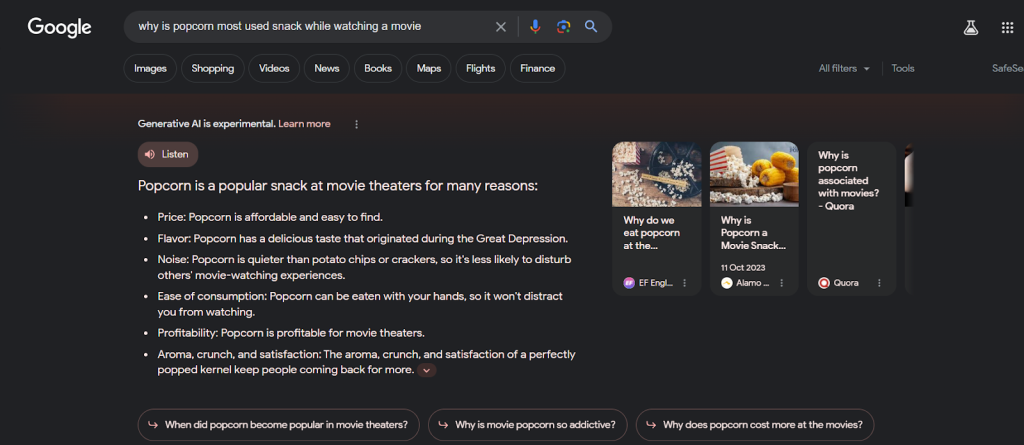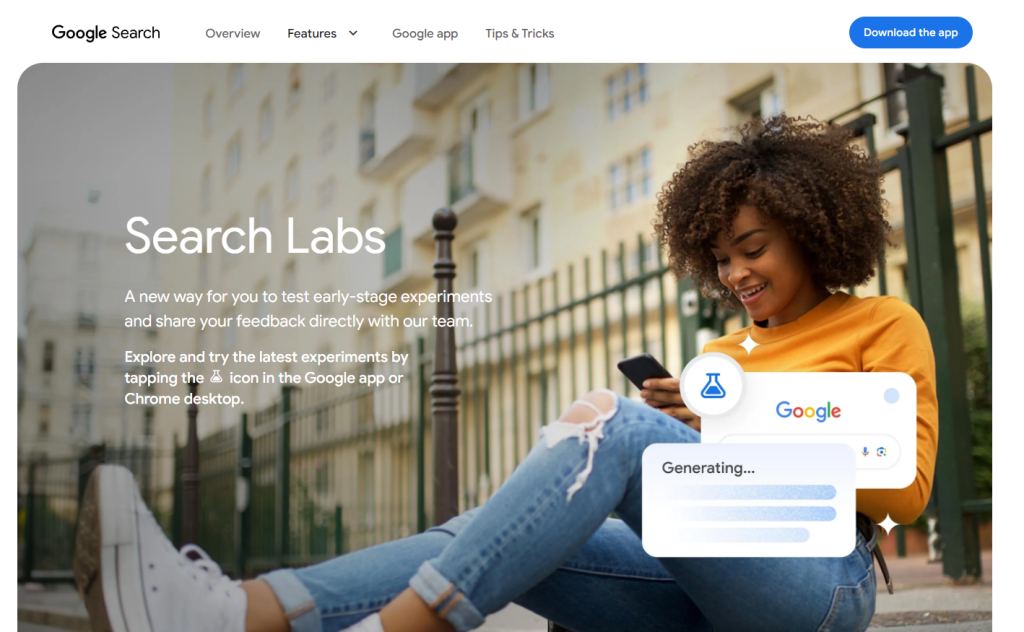The SEO landscape of 2024 is undergoing significant shifts driven by emerging SEO trends. Gone are the days of minor adjustments; instead, we’re witnessing transformative changes that redefine online business operations. Traditional practices like keyword stuffing are being replaced by cutting-edge technologies such as AI, with a focus on personalized search experiences driven by user intent.
In this post, we delve into the most impactful 2024 SEO trends, drawing insights from industry experts and real-world case studies to present actionable strategies. From harnessing the power of voice search to mastering semantic understanding, we unveil the latest SEO techniques aimed at boosting your website’s visibility in search results.
Whether you’re a seasoned marketer or just stepping into the field, this comprehensive guide arms you with the knowledge and tools needed to excel in the evolving SEO landscape. Join us on this journey as we uncover the key trends shaping the future of SEO in 2024.
SEO companies adhering to 2024 trends are equipped to boost their clients’ rankings in organic search results and attract more traffic.
AI And Machine Learning In SEO
The SEO landscape is transforming in 2024. Traditional practices like keyword stuffing are becoming less relevant, allowing space for AI and machine learning algorithms to take center stage. These advanced technologies provide various tools and strategies to advance your website’s search performance. From enhancing keyword strategies to elevating content quality and link-building techniques, AI is redefining the SEO environment.
Imagine AI assistants efficiently suggesting relevant keywords tailored to your audience. These tools can analyze competitor content, revealing overlooked opportunities. Moreover, they can generate content personalized to specific audience profiles. This isn’t just a glimpse into the future—it’s the current reality with AI-driven SEO tools.
Here’s how they can benefit you:
- Discover hidden keyword opportunities: AI algorithms sift through extensive search data, identifying long-tail keywords and emerging trends that traditional methods might overlook.
- Create tailored content: AI assists in understanding audience intent, enabling the crafting of content that resonates with their needs and preferences.
- Streamline link-building efforts: AI-powered tools streamline the process of identifying relevant websites for link-building outreach and automate communication with potential link partners.
However, it’s essential to recognize that AI isn’t a universal remedy. While highly effective, it should complement human insight and innovation rather than replace it entirely. Embrace AI as a valuable ally in your SEO efforts, harnessing its capabilities to refine your strategies and foster sustainable growth.
Here are instances illustrating AI in action:
- Google AI’s MUM (Multimodal Unified Model): This advanced AI model adeptly processes information in various formats, such as text, images, and code. Its capabilities enable it to deliver enhanced search results, improving user experiences.
- Rytr: An AI writing assistant skilled in creating diverse content types with different tones and styles, from blog posts to social media captions. Its flexibility allows users to convey their messages effectively across various platforms.
- Surfer SEO: Utilizing AI technology, this tool thoroughly analyzes website content and provides actionable recommendations to enhance on-page optimization. By leveraging AI insights, users can refine their digital strategies to increase online visibility and engagement.
These examples highlight the significant impact of AI on the SEO landscape. As AI technology continues to evolve, we expect the emergence of even more innovative tools and methodologies in the future.
Google’s AI Snapshot Enhances User Interaction
Google’s AI snapshot transforms the search process by presenting AI-generated outcomes directly at the top of search engine results pages (SERPs). This innovation furnishes concise answers to user queries, accompanied by relevant visuals and a conversational engagement style, thereby significantly improving user interactions.

Unlike a conventional chatbot, SGE seamlessly integrates into Google’s search interface, providing users with clear and concise responses. The snapshot also includes links to the sources of information and encourages further exploration, enhancing the interactivity of the search process.
Presently accessible to a limited audience within the U.S. and exclusively in English, SGE marks a transition towards a more user-friendly and intuitive search experience, where the algorithm adeptly anticipates and meets user requirements.
This advancement underscores the substantial investment in artificial intelligence technology, with the market forecasted to approach nearly two trillion U.S. dollars by 2030.
Revolutionize SEO in 2024: AI Content Strategies Unveiled
Voice Search Optimization
The importance of voice search in SEO has risen significantly, reshaping the digital landscape. Initially negligible, voice search rapidly evolved to capture a substantial portion of global search volume within its first year of widespread availability. By 2026, projections indicate that over half of all U.S. internet users will integrate voice search into their online experience.
Here are some strategies to optimize content effectively for voice search:
- Craft content in a conversational tone and incorporate natural language queries to align with how individuals verbally articulate their search queries.
- Target and optimize for long-tail keywords, which better match voice search queries’ detailed and context-specific nature.
- Ensuring mobile-friendliness of websites, as voice search is closely tied to mobile usage, with Google already prioritizing mobile-first indexing.
- Focusing on local SEO efforts to cater to the prevalent usage of voice search for location-based inquiries, crucial for local businesses’ discoverability.
- Improving site speed to enhance user experience, as quick and concise responses are preferred in voice search interactions.
- Aiming to secure featured snippets, as they often serve as the source of voice search responses provided by virtual assistants like Siri, Alexa, and Google Assistant.
Case studies and statistics further emphasize the growing dominance of voice search:
- Google’s annual report indicates that 27% of the global online population uses voice search on mobile.
- About 41% use voice search daily.
- Approximately 36.6% of US residents use voice assistants.
- The average length of a voice search query is around 29 words.
These insights underscore the necessity for businesses to adapt their SEO strategies to leverage the increasing popularity of voice search, ensuring visibility and competitiveness in an evolving voice-centric digital landscape.
Also Read: The Three Pillars of Search Engine Optimization
User Experience (UX) And SEO
In today’s digital landscape, a website’s success is determined by search engine visibility and by offering an engaging and smooth user experience (UX). Google recognizes this significant relationship and integrates UX directly into its ranking algorithms. Consequently, optimizing your website for both search engines and users is no longer optional but necessary.
Why UX Matters For SEO
- Increased Engagement And Dwell Time: When users find your website enjoyable and easy to navigate, they tend to stay longer, explore more pages, and engage with your content. This positive user behavior sends strong signals to search engines, indicating a valuable and relevant website.
- Reduced Bounce Rate: Frustrating experiences lead to users quickly clicking away, increasing your bounce rate and harming SEO ranking. Conversely, a well-designed UX encourages users to stay and find what they’re looking for, boosting your ranking potential.
- Mobile-First Indexing: Google prioritizes mobile-friendly websites in its search results. Ensuring your website offers a seamless experience across all mobile devices is crucial for visibility and user satisfaction.
Some strategies to improve website speed, mobile responsiveness, and user engagement include:
- Prioritize Speed: Swift page load times are crucial; even a one-second delay can decrease conversions by 7%. Utilize Google’s PageSpeed Insights tool to pinpoint and resolve speed bottlenecks promptly.
- Embrace Responsive Design: Ensure seamless adaptation to all screen sizes and devices to avoid Google penalties for subpar mobile experiences, which could severely impact your website’s performance.
- Focus on Usability: While content is vital, usability reigns supreme. Craft high-quality content that addresses user intent and search queries. Organize your content intuitively for effortless exploration with clear navigation, headings, and internal linking.
- Optimize Navigation: Treat your website like a well-organized store. Users should locate what they need effortlessly. Implement clear menus, search functionality, and breadcrumb navigation for intuitive browsing.
- Enhance Visual Appeal: Elevate user engagement with visually appealing elements such as high-quality images, infographics, and videos. These elements not only captivate users but also make your website more memorable.
Examples of UX And SEO Success:
- Nike adapted its website and product pages to accommodate the rising prevalence of voice search, resulting in a 30% increase in traffic from voice searches and a 20% uptick in online sales.
- Sephora introduced a visual search tool enabling users to upload makeup look images, leading to a 15% rise in conversion rates and heightened brand engagement.
- Airbnb enhances user experience by personalizing search results and recommendations, resulting in a 10% boost in booking conversions and increased average booking values.
- Moz’s emphasis on crafting informative, high-quality content addressing user needs solidified its status as an SEO industry leader, driving a 20% annual growth in organic traffic.
- Ahrefs revamped its user interface for enhanced usability, resulting in a 15% reduction in support tickets and a 10% improvement in user satisfaction.
Prioritizing user experience (UX) and search engine optimization (SEO) is pivotal for achieving online success. By emphasizing UX, not only do you satisfy users, but you also strengthen your website’s visibility on search engines. Investing in both areas can enrich your online presence, attract a larger audience, and enhance conversion rates.
Furthermore, leveraging user testing tools like Crazy Egg or Hotjar can furnish valuable insights into user behavior, aiding in identifying areas ripe for improvement in both UX and SEO.
Semantic Search And Natural Language Processing (NLP)
Traditional keyword-based search methods often face limitations when users seek specific information that may not align precisely with their input keywords. For instance, searching for “fastest car” might logically lead one to expect results about high-performance automobiles, such as Ferraris. However, due to the literal interpretation of keywords, the results could instead include information about the speed of cheetahs.
Semantic search aims to overcome this limitation by looking beyond the mere surface-level interpretation of keywords. It explores the deeper meaning and context of a user’s query, employing Natural Language Processing (NLP) techniques to understand the nuances of human language.
By analyzing the individual words in a search query, their relationships to one another, and the broader context in which they are used, semantic search can more accurately infer the user’s intent. Consequently, it delivers search results that are more closely aligned with their needs.
Semantic search significantly enhances the user experience by incorporating factors such as user history and preferences, providing personalized results tailored to individual interests. This advancement in search technology, leveraging NLP and contextual analysis, leads to improved accuracy and relevance in search results, thereby boosting user satisfaction.
The Role Of NLP Algorithms
NLP algorithms support semantic search through several vital processes:
- Text Analysis: NLP algorithms dissect text into its essential elements, such as individual words, phrases, and their syntactic and semantic connections. This involves tasks like tokenization, dividing text into smaller units like words or sentences, and parsing, which examines the grammatical structure of sentences.
- Named Entity Recognition (NER): This task entails pinpointing and categorizing named entities within text, such as people, organizations, locations, dates, etc. NER algorithms scour the text to identify and sort specific entities into predefined categories.
- Sentiment Analysis: NLP algorithms scrutinize text to discern its underlying sentiment or emotional tone. This may involve classifying text as positive, negative, or neutral or detecting more nuanced emotions like joy, anger, sadness, or fear. Sentiment analysis aids in understanding customer feedback, social media sentiment, and opinion mining.
- Word Embeddings: Word embeddings serve as a method to represent words as numerical vectors in a high-dimensional space. These vectors aim to capture semantic relationships between words based on their context in extensive text collections. Models like Word2Vec, GloVe, and fastText empower algorithms to grasp the meaning of words and their associations with other words in a given context.
- Machine Learning: Machine learning bolsters NLP algorithms by training them on vast labeled text datasets, enabling them to identify patterns and make precise predictions. Techniques such as deep learning, RNNs, and transformers have significantly advanced NLP tasks, enhancing performance and accuracy.
Search Engines Embracing User Intent
Modern search engines are increasingly using semantic search to
- Understand the “Why” Behind Your Query: Search engines delve deeper into the purpose or motive behind your search query, aiming to grasp the underlying intent rather than just processing the literal words you input.
- Consideration of Location, Past Searches, and Preferences: Location, search history, and user preferences are factored in, enhancing the search engine’s ability to deliver tailored results aligned with your context and interests.
- Delivery of Tailored Results: Results are personalized to cater to your needs and context, ensuring that the information presented is highly relevant and valuable based on your unique requirements.
- Ranking Content Based on True Relevance: Content is ranked according to its genuine relevance to your intent, prioritizing substance over superficial indicators like keyword density, thus enhancing the quality and accuracy of search results.
To enhance semantic search optimization, consider the following guidelines:
- Topic-Centric Approach: Focus on addressing user interests and queries, prioritizing relevance over keyword density.
- Natural Language Emphasis: Use conversational language, avoiding excessive keyword repetition to improve readability and user engagement.
- Long-Tail Keyword Optimization: Target specific user intents by incorporating longer, more descriptive keywords to enhance search visibility and relevance.
- Structured Content Design: Organize content logically with clear headings and subheadings, improving readability and aiding information retrieval for both users and search engines.
- Quality Source Integration: Include links to credible, authoritative sources to boost content credibility and offer additional context for users.
- Comprehensive Answer Provision: Provide thorough responses that address user questions comprehensively, effectively meeting their informational needs.
- Adaptation to Search Trends: Stay updated on evolving search patterns and adjust content strategy accordingly to sustain relevance and visibility in search results
Also Read: Get Targeted Traffic From Long Tail Keywords
E-A-T (Expertise, Authoritativeness, Trustworthiness)
Understanding and implementing E-A-T (Expertise, Authoritativeness, Trustworthiness) is essential for any website aiming for higher rankings in Google’s search results. In 2022, Google introduced another element to the EAT mix, E-E-A-T (Experience, Expertise, Authoritativeness, Trustworthiness), also known as double-EAT in the business. This addition emphasizes the importance of an author’s real-world experience in evaluating content value.
However, the main principle remains trust. Establishing topical authority around your brand positions you as the primary source for a specific topic or inquiry. Implementing topic clusters is one effective method to enhance your website’s topical authority.
Google’s E-A-T Guidelines Overview
E-A-T, short for Expertise, Authoritativeness, and Trustworthiness, constitutes a set of criteria utilized by Google’s human quality raters to evaluate the quality and credibility of web pages. This framework aids Google in ensuring its search results furnish accurate and valuable information.
The significance of E-A-T lies in its correlation with improved search rankings, particularly for websites falling under the Your Money or Your Life (YMYL) category, which encompasses subjects like health, finance, and news. Google prioritizes dependable information for such critical domains.
Various factors contribute to E-A-T assessment:
- Expertise: Evaluates whether the creator possesses pertinent qualifications and experience.
- Authoritativeness: Assesses whether the website is esteemed as a leader within its niche.
- Trustworthiness: Considers if the website exhibits transparency, precision, and responsible publishing practices.
Strategies for Enhancing E-A-T Signals
- Generate high-quality content: Prioritize accuracy, depth, and value by thoroughly researching topics and citing reputable sources. Substantiate claims with evidence to enhance credibility.
- Enhance author credibility: Highlight the author’s expertise, experience, and accomplishments. Consider incorporating author bio pages and contributing to well-regarded publications to bolster credibility.
- Establish website authority: Strengthen your website’s authority by acquiring backlinks from respected sources within your industry. Cultivate a positive online presence through favorable reviews and mentions.
- Promote website trustworthiness: Foster trust with visitors by being transparent about ownership, contact details, and editorial guidelines. Adhere to data privacy standards and avoid hosting harmful content.
- Optimize user experience: Improve website usability, security, and inclusivity. Streamline navigation for easy access to pertinent information, prioritizing user needs and preferences.
Case studies highlighting the importance of E-A-T in SEO Success
- NerdWallet: Establishing Trust and Authority in Financial Content
- Situation: NerdWallet, a personal finance website, faced strong competition in the highly saturated financial content arena.
- Strategy: The focus was on building E-A-T (Expertise, Authoritativeness, Trustworthiness) by recruiting accredited financial experts, forming partnerships with reputable institutions, and implementing stringent editorial standards.
- Result: NerdWallet experienced a surge in organic traffic, achieving high rankings for competitive keywords and cementing its reputation as a reliable source of financial advice.
- WebMD: Harmonizing User Experience with Medical Accuracy
- Situation: WebMD, a health information website, aimed to balance user-friendliness and delivering accurate medical information.
- Strategy: They adopted E-A-T principles by collaborating with medical professionals, instituting editorial oversight, and ensuring content precision through rigorous fact-checking and citations.
- Result: WebMD witnessed a notable uptick in organic traffic and user engagement while upholding its standing as a trustworthy provider of health information.
- Mayo Clinic: Leveraging Expertise and Reputation for Medical SEO:
- Situation: The Mayo Clinic, a renowned medical institution, sought to enhance its online visibility for health-related searches.
- Strategy: Leveraging their established expertise and reputation, they published content authored by physicians and supported by scientific evidence.
- Result: The Mayo Clinic’s website attained top rankings for numerous medical keywords, reaffirming its status as a reputable authority in healthcare information.
- Backlinko: Focusing on User Intent and Topical Expertise:
- Situation: Backlinko, an SEO blog, aimed to boost its rankings for competitive keywords in the SEO field.
- Strategy: They crafted content that catered to specific user intents and showcased expertise in SEO, incorporating thorough research, data-driven insights, and actionable advice.
- Result: Backlinko experienced a substantial rise in organic traffic and positioned itself as a premier resource for SEO professionals, thanks to its E-A-T-centric approach.
Remember: Establishing expertise, authoritativeness, and trustworthiness (E-A-T) requires dedication and effort, but it is a worthwhile investment for sustained SEO success. Concentrate on generating valuable content, demonstrating expertise, and emphasizing user trust.
Also Read: Google’s Update E-A-T — How it Affects Your Industry (and What to do about it)!
Video SEO And Visual Search
The surge in video consumption has attracted the attention of search engines, presenting a significant opportunity for marketing teams. With nearly 3.5 billion digital video viewers projected by the end of 2023, the impact of video content on SEO is undeniable.
Wyzowl’s Video Marketing Statistics 2023 report highlights key insights into the future of SEO:
- 51% of individuals are more inclined to share video content over any other type.
- In 2023, 91% of businesses used video as a marketing tool.
- A staggering 89% of consumers admit that watching a video influenced their purchasing decisions.
Understanding this trend is crucial, as it underscores the importance of creating video content that resonates with audiences and ranks effectively in Google search results and on YouTube. Embracing visual search technology further enhances the potential for organic reach and engagement.
The rise of video content significantly impacts SEO in several ways:
- Engagement and Click-Throughs: Video content effectively captivates audiences, leading to longer interactions and lower bounce rates. This, in turn, improves SEO performance by increasing user engagement metrics and prolonging website visits.
- Rich Snippets and Knowledge Panels: Crafting titles and descriptions for videos with care can trigger rich snippets in search results. This boosts visibility and encourages users to click through, strengthening SEO strategies by increasing visibility and click-through rates.
- Enhanced Accessibility: Video formats cater to a wide range of audiences, including visual learners and those with accessibility needs. This broadens content reach and fosters deeper engagement, reinforcing SEO efforts through greater inclusivity and diversity of engagement.
Techniques for optimizing videos for search engines
- Keyword Research: Conduct comprehensive research to identify relevant keywords that match your video content. Integrate these keywords naturally into your titles, descriptions, and transcripts. Utilize tools like YouTube’s search bar suggestions and Google Trends to refine your keyword strategy.
- Quality and Production: Emphasize the creation of high-quality videos that engage your audience. Ensure your audio and visuals are clear and captivating. Adjust the length of your videos based on your audience’s preferences and the nature of your content.
- Metadata Optimization: Focus on crafting enticing titles and descriptions with relevant keywords and valuable information about your video. Additionally, include transcripts and closed captions to improve accessibility and searchability.
- Thumbnails and Branding: Create visually appealing thumbnails that grab the viewer’s attention and maintain consistency with your branding. A compelling thumbnail can significantly boost click-through rates and drive more traffic to your video.
- Engagement Signals: Prompt viewers to interact with your video by encouraging social shares, comments, and likes. Increased engagement signals can positively impact your video’s search engine ranking and enhance its visibility.
- Strategic Playlists and Channel Optimization: Arrange your videos into playlists centered on relevant topics or themes to facilitate easier navigation for viewers seeking related content. Optimize your channel by integrating keywords and upholding consistent branding to amplify its discoverability and attract a broader audience.
Visual Search
Visual search, a powerful tool encompassing tasks like shopping, navigation, landmark identification, and more, swiftly proves its utility upon adoption. Its applications extend to accessing local business reviews, translation services, recipes, and nutrition information, among others. Google Lens searches and image uploads to Google’s search field are part of this expansive realm.
As search engines increasingly use AI to interpret visual content, optimizing video elements like thumbnails, titles, and descriptions becomes crucial for Video SEO. This ensures their visibility in visual search results, aligning with the preferences and interests of target audiences. Embracing this advancing technology is essential for maintaining relevance and accessibility in the ever-changing landscape of online content discovery.
Optimizing for visual search involves several key factors:
- Ensure your website is mobile-friendly. Nearly all Google Lens results come from sites that pass Google’s mobile-friendly test. Since almost all Google Lens searches happen on mobile devices, prioritizing mobile-friendly design is crucial.
- Implement traditional image SEO techniques, such as optimizing image filenames and alt text. These methods have a positive impact on Google Lens rankings.
- Incorporate textual content alongside images on your web pages. Google tends to extract Google Lens image results from pages with significant text, averaging around 1,600 words.
The Dominance of YouTube in Video Content: SEO Strategy Implications
- Significant Platform and Reach: YouTube’s substantial platform presence and global audience make it one of the most influential search engines worldwide, offering extensive opportunities for reaching and engaging with a wide range of viewers.
- SEO Benefits: Through strategic optimization of videos for YouTube’s search algorithms, content creators can significantly improve their visibility in search results and strengthen their overall search engine optimization (SEO) efforts.
- Content Diversification: To diversify content and cater to various audience preferences, creators can utilize different features offered by YouTube, including live streams, Shorts (short-form videos), and Community posts. This multifaceted approach helps attract and retain engaged viewers.
- Cross-Promotion and Engagement: Incorporating promotions for external platforms, such as websites and other social media channels, within YouTube videos is a potent cross-promotional tool. It directs traffic to these platforms and encourages deeper engagement and interaction among viewers across different channels.
- Platform-Specific Optimizations: While YouTube is a powerful platform, it’s crucial to acknowledge other video hosting platforms’ unique strengths and requirements. Tailoring content and optimization strategies to suit these platforms can further amplify the reach and impact of video content beyond YouTube’s borders.
Also, checkout the YouTube video for brief insights on AI-powered content strategies transforming SEO in 2024
Sustainability And Green SEO
Sustainability has shifted from being a niche concern to becoming a mainstream expectation, exerting significant influence on consumer behavior and entire industries. Consequently, SEO strategies are evolving to align with this transition. Let’s delve into the growing importance of Green SEO and strategy for implementing eco-friendly practices:
- Consumer Demand: Research indicates a consistent rise in searches for sustainable products and services. Integrating eco-friendly terms into optimization efforts facilitates engagement with these conscientious consumers.
- Brand Differentiation: In a crowded market, demonstrating a commitment to sustainability can offer a competitive edge and attract loyal customers who share your values.
- Search Engine Signals: Though not definitively confirmed, some experts suggest that search engines like Google may consider website sustainability in their ranking algorithms.
Green SEO Strategies:
- Enhancing Website Efficiency
- Enhance page speed: Implement strategies such as image compression, caching, and efficient coding practices to accelerate loading times, reducing energy consumption and enhancing user experience.
- Opt for a green web host: Choose hosting providers that operate on renewable energy sources to diminish your website’s carbon footprint.
- Streamline website design: Adopt a minimalist approach, eliminating unnecessary elements and animations to conserve energy and ensure rapid loading times.
- Crafting Content and Employing Keywords
- Target eco-conscious keywords: Conduct thorough research to identify and integrate keywords pertinent to sustainability, ethical sourcing, and environmental responsibility.
- Develop meaningful content: Produce informative and captivating materials that educate customers about your sustainable practices and the environmental impact of your industry.
- Embrace local search optimization: Optimize content for local keywords and engage in community initiatives to attract environmentally conscious consumers within your vicinity.
- Prioritizing Transparency and Authenticity
- Steer clear of greenwashing: Maintain honesty and integrity by refraining from overstating your sustainability endeavors. Be transparent about your initiatives and their actual impact.
- Foster stakeholder engagement: Participate actively in sustainability conversations, industry events, and collaborative efforts to underscore your dedication and foster trust.
- Track and report progress: Continuously monitor your website’s environmental footprint and share pertinent data to highlight your ongoing commitment to sustainability.
Additional Tips
- Embrace sustainable practices throughout your business: Reduce paper usage, promote eco-friendly packaging, and offset carbon emissions when possible.
- Get your team on board: Educate your employees about Green SEO and empower them to contribute to sustainable practices.
- Stay informed: Keep up-to-date with the latest advancements in Green SEO and adapt your strategies accordingly.
By implementing these strategies, you can contribute to a healthier planet while reaping the benefits of improved SEO and attracting a growing segment of environmentally conscious consumers. Remember, Green SEO is an ongoing journey, not a destination. Embrace the continuous improvement mindset and watch your brand flourish alongside the environment.
Local SEO And Hyperlocal Targeting
Local SEO holds significant importance in today’s digital landscape, particularly for businesses with physical storefronts. Its significance stems from several key factors:
First and foremost, local SEO bolsters visibility by ensuring that your business prominently appears in relevant search results when individuals seek products or services in close proximity to their location. This heightened visibility directly translates into increased foot traffic, positively impacting your business’s bottom line.
Secondly, a well-crafted local SEO strategy contributes to enhancing credibility. By optimizing your online presence, which includes maintaining a Google My Business listing and garnering positive reviews, you establish trust and confidence in your brand among potential customers.
Furthermore, local SEO facilitates targeted reach, allowing you to connect with individuals actively seeking your products or services within your specific geographical area. This focused approach minimizes wasted marketing efforts and ensures that your resources are efficiently directed toward potential customers.
Lastly, excelling in local SEO offers a competitive edge. By prominently appearing in local search results, you gain a significant advantage over competitors who have yet to prioritize optimizing their online presence for local searches. This advantage can prove pivotal in attracting customers and securing market share within your locality.
Optimizing Google My Business And Local Citations
Google My Business (GMB) is the foundation of your local SEO strategy. To optimize it effectively:
- Thoroughly complete your GMB profile: Ensure all relevant details are inputted accurately, including your precise address, contact information, business description, and high-quality images.
- Maintain NAP consistency: Ensure consistency across various online directories and platforms in your business name, address, and phone number (NAP).
- Actively manage reviews: Encourage customers to leave positive feedback and promptly respond to all comments, showcasing your dedication to customer satisfaction.
- Publish relevant content: Keep your profile dynamic by regularly sharing updates, promotions, and upcoming events to engage your audience.
- Maximize GMB features: Utilize tools such as service menus, booking options, and Q&A sections to offer additional value to potential customers.
Moreover, local citations—mentions of your business NAP on other websites—are crucial for enhancing your local search ranking. Build citations from relevant directories and local websites to strengthen your online presence.
Hyperlocal Targeting Strategies
Hyperlocal targeting expands the scope of local SEO by focusing on even smaller geographic areas, such as neighborhoods or specific streets.
Key strategies include:
- Implementing hyperlocal keywords: Concentrate on keywords specific to your immediate vicinity, such as neighborhood names, landmarks, and local events.
- Engaging with local communities: Participate in online forums, community groups, and local events to enhance brand recognition and build relationships.
- Collaborating with local influencers: Partner with local personalities or businesses to connect with engaged local audiences and expand your reach.
- Running hyperlocal PPC campaigns: Target paid ads to precise geographic areas with customized messaging for maximum relevance.
- Offering hyperlocal promotions and deals: Tailor offers to meet your hyperlocal audience’s distinct needs and preferences.
Success in local SEO and hyperlocal targeting requires ongoing effort and attention. Continuously evaluate your progress, analyze results, and adapt strategies to maintain a competitive advantage.
Additionally
- Utilize local SEO tools to streamline optimization efforts.
- Stay updated on local search algorithm changes and industry best practices.
- Consider enlisting help from reputable local SEO agencies when necessary.
By prioritizing local SEO and employing effective hyperlocal targeting tactics, you can establish deeper connections with potential customers, encourage meaningful engagement, and achieve sustainable business growth.
Privacy And Data Protection In SEO
The GDPR (General Data Protection Regulation) mandates compliance for all EU citizens and organizations operating within the EU. It necessitates explicit consent for data gathering and robust data security protocols while affirming users’ rights to view, correct, or delete their information.
The CCPA (California Consumer Privacy Act) mirrors GDPR principles but applies specifically to California residents. It grants users the right to understand collected data, opt-out of its sale, and request deletion.
Various other regional regulations similar to GDPR and CCPA exist globally, adding complexity to compliance for international businesses.
Impact on SEO:
- Limited Data Availability: Privacy regulations restrict data collection, directly impacting personalized experiences and targeting strategies.
- Transparency and Consent: SEO practices must prioritize transparency and require explicit user consent for data collection and subsequent use.
- Focus on Quality Content: Emphasizing relevancy and delivering value-driven content is crucial to attract and engage users naturally.
- Increased Technical Requirements: Secure website connections (HTTPS) and robust data security measures become essential in maintaining SEO effectiveness.
Best Practices for Compliance
- Provide a Clear Privacy Policy: Clearly explain the data collected, usage, and user rights.
- Implement Consent Management: Ensure clear and informed consent for data collection and usage.
- Practice Data Minimization: Collect only essential data and maintain secure storage.
- Conduct Regular Data Audits: Continuously review and update data practices to meet regulatory requirements.
- Offer Transparency Tools: Grant users access to their data and empower them to control its usage.
Importance of User Privacy and Trust
- Influence on Search Engine Ranking: Prioritizing user privacy and trust can positively impact search engine ranking, as recognized by Google.
- Enhancement of User Experience: Transparency and control foster trust and contribute to positive user experiences.
- Protection of Brand Reputation: Data breaches and privacy violations can significantly harm brand reputation.
- Future Preparedness: Implementing compliant practices now ensures readiness for future regulatory changes.
Additional Points
- Invest in privacy-focused SEO tools and technologies.
- Educate your team on data privacy best practices.
- Regularly review and update your privacy policy and data collection practices.
Google Search Generative Experience
Google has begun implementing AI-powered SERP snippets called the Search Generative Experience (SGE). This advancement allows users to ask detailed questions and receive AI-generated answers based on existing web content. SGE provides quick summaries for complex search queries and suggests human-written content for further reading on various experiences. Concerns about losing traffic are mitigated as SGE guides users to top-ranking content for additional information.

While SGE may change search dynamics, it highlights the importance of authentic, experiential content to retain user engagement and Google rankings. Despite potential competition within Google’s ecosystem, SGE responds to industry trends rather than introducing a groundbreaking innovation.
The impact of Search Guideline Evolution (SGE) on SEO is significant:
- Priority on User Intent and Content Clarity: SEO needs to focus on understanding user intent and ensuring content is understandable to machines.
- Emphasis on Structured Data: Rich snippets and schema markup are crucial for accurately representing information.
- Importance of Comprehensive Content: Well-structured, informative content with diverse perspectives provides a competitive advantage.
- Optimization of Engagement Metrics: Metrics like click-through rates and dwell time are vital indicators of user engagement and should be optimized.
- Adaptation to an Evolving Landscape: It’s crucial to monitor SGE advancements continuously and adjust strategies to stay relevant.
Optimizing Content For Generative Algorithms
- Focus on User Intent: Understand the underlying motivation behind search queries and tailor responses accordingly.
- Prioritize Content Quality: Give precedence to well-crafted, informative content that is clear and readable.
- Ensure Factual Accuracy: Verify information and cite trustworthy sources to maintain content precision.
- Offer Multiple Perspectives: Present diverse viewpoints and alternative sources to enhance understanding.
- Dive into Topic Depth: Provide comprehensive information covering various aspects of the subject matter.
- Optimize for Engagement: Create content encouraging reader interaction and further exploration.
- Utilize Structured Data: Use markup techniques to convey essential information to search engines.
Adapting without abandoning established SEO principles is necessary in the evolving landscape of SGE (Search Generation Engine). While SGE introduces new dynamics, such as potential impacts on snippet inclusion, the core tenets of SEO remain steadfast.
Thus, while staying informed about emerging trends, maintaining a primary focus on securing top positions on Google remains a valuable strategy amid evolving search paradigms.
Case Studies and Examples
Although SGE was announced in May 2023 and underwent beta testing later that year, it’s premature to find published case studies illustrating specific adaptations and their effects. Nevertheless, we can provide promising examples and guidance to elucidate how companies prepare for and address the future of SGE.
- Airbnb experienced a significant 30% surge in mobile bookings following strategic investments in mobile-first design and speed optimization. This aligns with SGE’s emphasis on enhancing user experience and mobile accessibility.
- Domino’s achieved a notable 20% uptick in online orders by incorporating conversational ordering capabilities via Facebook Messenger. This reflects SGE’s focus on facilitating natural language interactions.
- Walmart implemented structured data markup for product information, resulting in a substantial 20% rise in click-through rates from search results. This aligns with SGE’s dedication to providing comprehensive information and understanding user intent.
- Yelp focuses on optimizing local search functionality, aiding businesses in claiming and managing listings, ensuring accuracy, and fostering customer reviews. This aligns with SGE’s potential for integrating local search capabilities.
Remember: SEO is an evolving field; staying updated on Google’s advancements is crucial. Regularly monitor Search Labs and Google’s official pronouncements for the latest developments in SGE and adapt your strategies accordingly.
Dynamic Social Signals And SEO
Social signals are the real-time interactions and engagement that your content receives across different social media platforms. These interactions encompass likes, shares, comments, and reactions, indicating user interest and approval and signaling the value and relevance of the content.
Moreover, metrics like clicks, impressions, and reach demonstrate how widely your content is viewed and its potential to drive website visits. Additionally, brand mentions and sentiment analysis are significant; positive mentions and engagement reinforce brand authority, while negative sentiment could highlight areas for improvement.
Aligning your content with trending topics and relevant hashtags improves discoverability and encourages participation in online discussions. While search engines like Google haven’t explicitly confirmed the direct use of social signals in ranking algorithms, they value user-generated content and online interaction.
Thus, robust social signals can indirectly impact SEO in several ways. These include enhancing brand authority and trustworthiness, driving website traffic through social media referrals, discovering new content, and fostering increased brand awareness, potentially resulting in more organic searches for your brand name.
Strategies For Leveraging Social Signals
- Produce valuable content: Focus on delivering informative and engaging material that resonates with your target audience.
- Customize for social media platforms: Utilize relevant hashtags, enhance visuals, and tailor content formats to meet the requirements of each platform.
- Implement targeted social media campaigns: Utilize paid social advertising to reach specific demographics and interests, thereby increasing traffic and engagement.
- Encourage social engagement: Respond to comments, address inquiries, and actively participate in relevant discussions.
- Assess social media effectiveness: Monitor key metrics to understand what resonates with your audience and adjust your strategy accordingly.
Social Engagement’s Impact on Search Visibility: Case Studies
- Shopify: Gained a 75% increase in organic traffic attributed to their social media strategy.
- BigCommerce: Experienced a 200% surge in organic traffic due to content and social media efforts.
- Buffer: Achieved a 300% rise in organic traffic within three months of implementing a social media campaign, which included influencer partnerships and user-generated content. Social media contributed to 20% of the total traffic increase.
Conclusion
In 2024, SEO trends prioritize local targeting, data privacy, and Google’s zero-click experience. Dynamic social signals and AI-powered insights play a crucial role, alongside optimizing for voice search.
Success in SEO hinges on delivering the optimal experience for your users. By comprehending their requirements and leveraging the latest tools and trends, you can ensure your content stands out in the continually changing digital realm.
FAQs
How will AI impact SEO in 2024?
In 2024, AI will significantly impact SEO strategies by enabling advanced data analysis, personalized content creation, and predictive analytics, enhancing user targeting and engagement. AI-powered tools will streamline tasks such as keyword research, content optimization, and link building, thereby improving overall search performance.
How important will E-A-T (Expertise, Authoritativeness, Trustworthiness) be in SEO strategies?
E-A-T will continue to be a crucial aspect of SEO, particularly for websites offering YMYL (Your Money or Your Life) content. Establishing expertise, demonstrating authority, and fostering trust through high-quality content, credible backlinks, and transparent authorship will be essential for improved search rankings and user trust.
What role will visual and voice search optimization play in SEO?
Visual and voice search optimization will gain prominence in 2024 as more users rely on these modes of search. Optimizing for image and video search, leveraging schema markup for rich snippets, and crafting content suitable for voice search queries will be vital strategies to enhance visibility and attract traffic from these evolving search formats.
How can businesses prepare for 2024 SEO trends?
To prepare for the SEO trends of 2024, businesses should invest in AI-powered SEO tools, prioritize UX enhancements across their websites, focus on creating authoritative and trustworthy content, and adapt their strategies to accommodate visual and voice search optimization. Staying updated with industry developments and agile in implementing new tactics will be crucial for maintaining competitive visibility in search results.


























